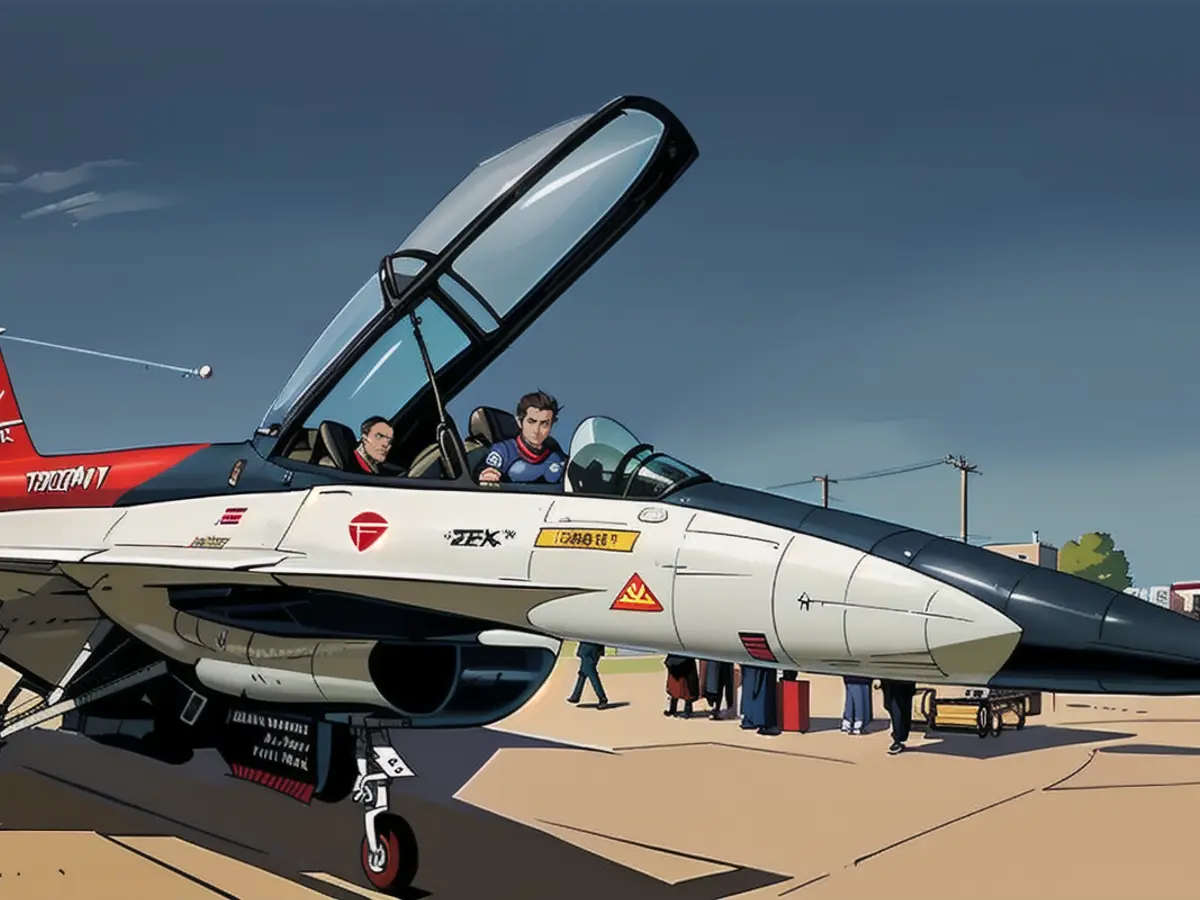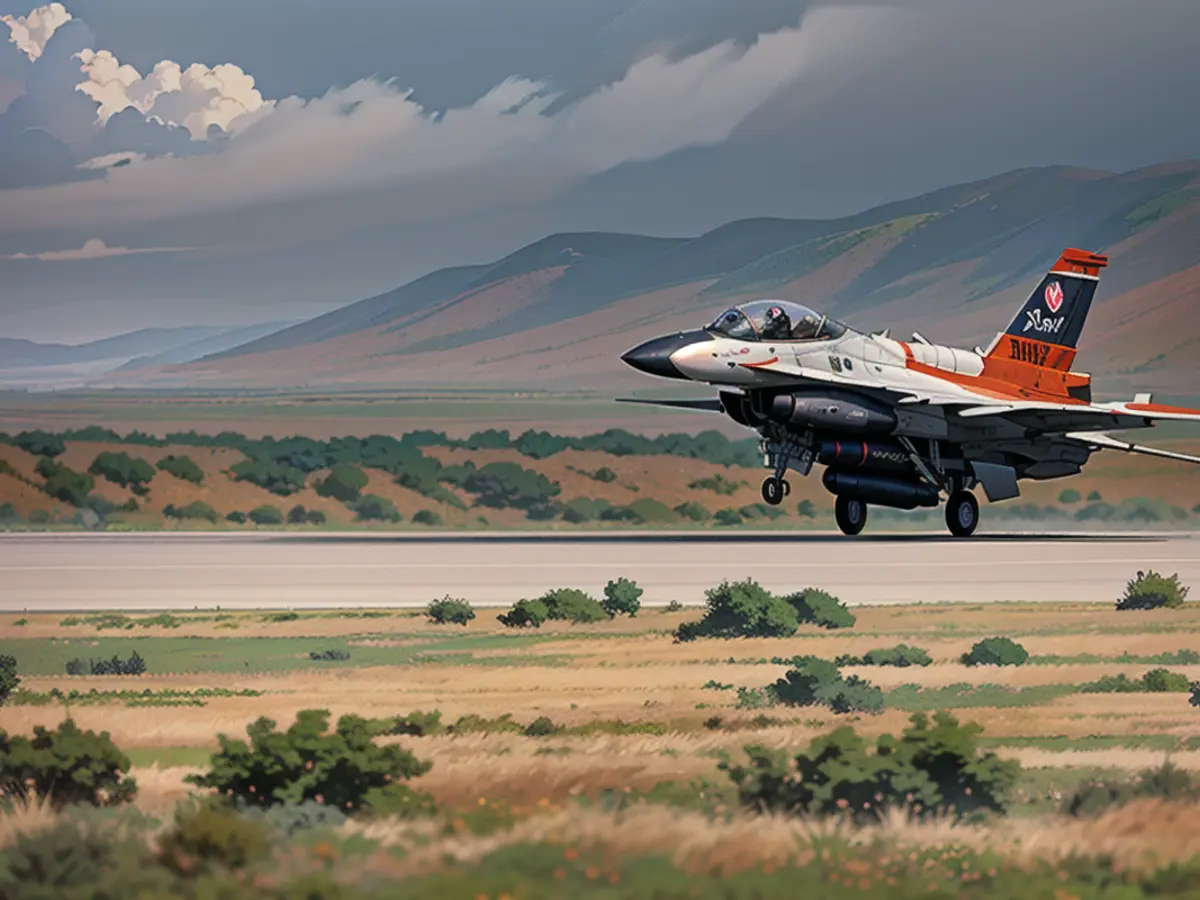Competition kicks off for self-guided combat aircraft
Are future wars going to involve machines taking control? The United States military is attempting to alleviate these worries and is already finding ways for fighter jets to function without human pilots in the future. The US and China are at the forefront of developing AI technology in the cockpit.
A demonstration played out recently when two US Air Force fighter jets engaged in a mock confrontation. In one, a pilot was at the controls, while the other was flown by artificial intelligence. Also on board the "Vista" was Frank Kendall, responsible for the Air Force. The display demonstrated just how advanced the Air Force's tech has become. However, this is just the beginning of what's to come.
Both the US and China are in a fierce competition in terms of AI and its integration into weapons systems. "Whether you call it a race or not, it is one," says US Vice Chief of Staff Christopher Grady. "We both recognize that this will be a crucial element on the future battlefield. China is working on it just as hard as we are."
As the public increasingly fears that future wars will be fought by machines, the military is quick to assure that this is unlikely to happen, at least not on the US side. The extent to which an opposing force could employ AI is yet to be seen, and the US military wants to be prepared.
It all began with missile defense
The foundation of AI in the military dates back to a combination of machine learning and autonomy. In the former, a computer processes data and rule sets to draw conclusions. Autonomy entails using these conclusions to take action without further human input.
The early roots of this tech can be traced back to the development of the Aegis missile defense system in the 1960s and '70s. It was trained with a series of if-then rules that enabled it to detect and intercept incoming missiles independently, faster than a human could. Though the system couldn't learn from its decisions, its reactions were still subject to the previously established rules.
AI underwent a significant leap in 2012, thanks to the huge amounts of data and advanced computing powers, allowing computers to analyze information and write the rules themselves. This marked the "big bang" of AI.
Over 300 AI projects are now in progress at the Pentagon. One focuses on analyzing thousands of hours of conversations between pilots in the cockpit. With this data, researchers at MIT are creating a dataset that allows the AI to differentiate between critical and unimportant information. This will enable the AI to quickly highlight dangerous situations.
AI still has to learn cockpit communication
Another project aims to develop an AI-based alternative to satellite-based GPS navigation. If satellites are damaged or disrupted during war, communication and navigation systems could be severely affected. The AI in question will learn by flying in a military cargo plane and recording massive amounts of data. It should be able to distinguish between vital signals for navigation and irrelevant ones, such as the electromagnetic disturbances from the aircraft. So far, the results have been "very, very impressive," says Garry Floyd, head of the responsible air force department.
Safety is a crucial factor in all projects. For the "Vista", for example, the experts underscore the importance of carefully curating the data provided to the AI. The AI is only given the data it has previously encountered during each flight, and new data is fed into it after each outing.
Besides safety, the selection of data also focuses on providing the AI with relevant information. As Admiral Grady explains, the AI needs to understand cockpit communication, which often involves command and control and pilot thought processes. The AI doesn't need to learn swearing, though.

Read also:
- Year of climate records: extreme is the new normal
- Precautionary arrests show Islamist terror threat
- UN vote urges Israel to ceasefire
- SPD rules out budget resolution before the end of the year
The US and Chinese militaries are both heavily investing in integrating AI into their fighter aircraft, as demonstrated by the US Air Force's recent mock combat simulation with one jet piloted by AI and another by a human.
In response to concerns about future wars being fought by machines, the US military is working on AI that can distinguish critical information in cockpit communication, focusing on understanding command and control and pilot thought processes, while avoiding learning swearing or irrelevant information.
Source: www.ntv.de








